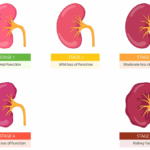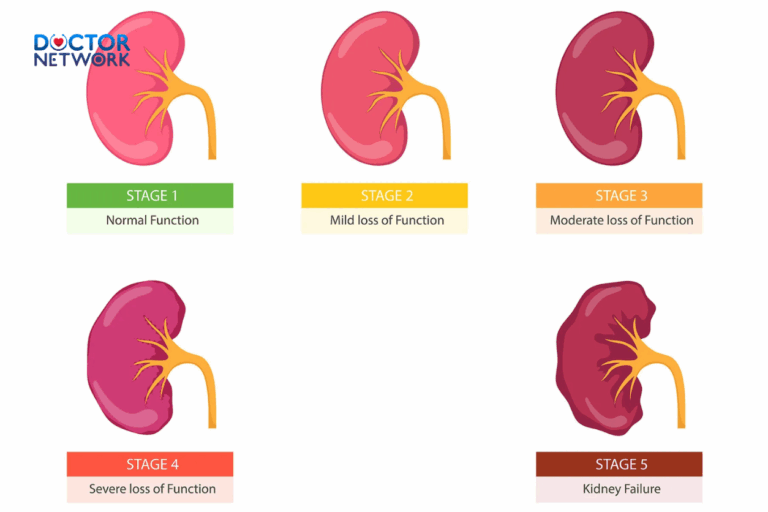Semaglutide can indeed cause fatigue, with clinical trials showing that 11% of Wegovy users and under 5% of Ozempic patients report tiredness as a side effect. This temporary fatigue typically occurs during initial treatment or dose increases, as the body adjusts to this GLP-1 receptor agonist’s effects on metabolism, blood sugar regulation, and gastric emptying processes.
Does Semaglutide make you tired? This comprehensive medical guide examines semaglutide-induced fatigue, exploring its underlying mechanisms, duration patterns, management strategies, and differentiation from other causes of tiredness. We’ll analyze the relationship between energy levels and semaglutide’s therapeutic actions, provide evidence-based approaches for maintaining vitality during treatment, and discuss when medical intervention becomes necessary for persistent exhaustion.
Understanding Semaglutide: Composition and Energy-Related Mechanisms
Semaglutide functions as a synthetic analog of the naturally occurring GLP-1 hormone, orchestrating multiple physiological processes that directly impact energy metabolism and cellular function. This medication’s primary therapeutic targets include glycemic control for type 2 diabetes management and substantial weight reduction through appetite suppression and metabolic enhancement.
The drug’s energy-influencing mechanisms operate through several interconnected pathways. Semaglutide stimulates pancreatic insulin release in response to elevated blood glucose levels, while simultaneously suppressing hepatic glucose production. Additionally, the medication significantly slows gastric emptying rates, prolonging satiety signals and reducing overall caloric intake patterns.
Key Physiological Actions Affecting Energy:
- Enhanced insulin sensitivity and glucose utilization efficiency
- Reduced hepatic gluconeogenesis and glycogen breakdown
- Delayed gastric motility and prolonged nutrient absorption
- Central nervous system appetite regulation through hypothalamic pathways
- Modified incretin hormone signaling cascades

These mechanisms collectively alter the body’s established energy homeostasis, requiring physiological adaptation periods that may manifest as temporary fatigue or altered energy perception patterns.
Does Semaglutide Cause Fatigue? Clinical Evidence and Frequency Analysis
Semaglutide definitively causes fatigue in a subset of patients, with occurrence rates varying significantly across different formulations and clinical populations. Clinical trial data reveals distinct fatigue reporting patterns among the three primary semaglutide preparations currently available through FDA-approved channels.
Clinical Trial Fatigue Reporting Rates:
| Semaglutide Formulation | Fatigue Incidence | Study Population | Treatment Duration |
|---|---|---|---|
| Wegovy (2.4mg weekly) | 11% of patients | Obesity management | 68-week trials |
| Ozempic (0.5-1mg weekly) | <5% of patients | Type 2 diabetes | 30-56 week trials |
| Rybelsus (oral) | Not specifically reported | Type 2 diabetes | 26-52 week trials |
Compounded semaglutide preparations also demonstrate fatigue as a commonly reported adverse effect, though comprehensive safety and efficacy data remains limited compared to commercially manufactured products. The absence of extensive FDA oversight for compounded formulations creates additional uncertainty regarding precise fatigue occurrence rates and severity patterns.
Peak Fatigue Timing Patterns:
- Most pronounced during initial treatment initiation (weeks 1-4)
- Significant occurrence following dose escalation periods
- Gradual improvement as physiological adaptation progresses
- Individual variation in duration and intensity levels
The temporal relationship between semaglutide administration and fatigue onset strongly suggests a causative connection, particularly given the medication’s profound effects on metabolic processes and energy regulation systems.
Why Does Semaglutide Cause Fatigue? Underlying Mechanisms and Contributing Factors
Semaglutide-induced fatigue results from multiple interconnected physiological adjustments as the body adapts to altered metabolic signaling and energy utilization patterns. Understanding these mechanisms provides crucial insights for effective management strategies and realistic expectation setting during treatment initiation.
Metabolic Adaptation and Energy Redistribution
The body requires substantial physiological recalibration when semaglutide fundamentally alters established metabolic pathways. This adaptation process demands significant cellular energy expenditure, temporarily reducing available energy reserves for daily activities and cognitive functions.
Caloric Intake Reduction Effects: Semaglutide’s potent appetite suppression capabilities often result in dramatic caloric intake reductions, sometimes below individual metabolic requirements. This energy deficit forces the body to mobilize stored energy reserves while simultaneously adjusting to lower fuel availability, creating temporary fatigue as metabolic efficiency improves.
Blood Sugar Stabilization Impact: The medication’s glucose-stabilizing effects eliminate the energy peaks and valleys associated with blood sugar fluctuations. While therapeutically beneficial, this stabilization removes familiar energy surges following meals, creating a perception of reduced vitality even as overall metabolic health improves.
Digestive System Modifications
Semaglutide’s gastric emptying delay significantly impacts nutrient absorption timing and energy availability patterns. Food remains in the stomach for extended periods, altering the normal rhythm of energy release and potentially creating sustained but lower-level energy delivery compared to pre-treatment patterns.
This digestive modification requires metabolic adaptation as the body learns to optimize energy extraction from delayed nutrient presentation. The adjustment period often manifests as fatigue while cellular processes recalibrate to new absorption timelines.
Dehydration and Electrolyte Imbalance
Common gastrointestinal side effects including nausea, vomiting, and diarrhea frequently lead to fluid and electrolyte losses. Dehydration represents one of the most common reversible causes of fatigue, making adequate hydration crucial for energy maintenance during semaglutide treatment.
Dehydration-Related Fatigue Mechanisms:
- Reduced blood volume and cardiac output efficiency
- Impaired cellular waste removal and nutrient delivery
- Electrolyte imbalances affecting muscle and nerve function
- Concentrated blood chemistry alterations
Blood Sugar Fluctuation Risks
While uncommon with semaglutide monotherapy, hypoglycemia risk increases significantly when combined with insulin or sulfonylurea medications. Low blood glucose episodes produce pronounced fatigue, weakness, tremors, and cognitive impairment requiring immediate intervention and ongoing monitoring.
Hypoglycemia Contributing Factors:
- Concurrent diabetes medication interactions
- Inadequate food intake relative to medication effects
- Exercise timing and intensity modifications
- Individual insulin sensitivity variations
Individual Variability and Personalized Responses
Fatigue severity and duration demonstrate remarkable individual variation based on multiple patient-specific factors. Metabolic rate differences, baseline health status, concurrent medication regimens, and genetic polymorphisms affecting drug metabolism all influence fatigue experiences.
Patient-Specific Variables Affecting Fatigue:
- Age-related metabolic changes and adaptation capacity
- Baseline fitness levels and cardiovascular health status
- Liver and kidney function efficiency
- Concurrent medical conditions and medication interactions
- Nutritional status and dietary adherence patterns
Duration of Semaglutide-Related Fatigue: Timeline and Recovery Patterns
Semaglutide-induced fatigue typically resolves within several weeks to a few months as physiological adaptation progresses and metabolic efficiency improves. This temporary nature distinguishes medication-related tiredness from chronic fatigue syndromes or underlying medical conditions requiring separate evaluation and treatment.
Typical Fatigue Resolution Timeline:
- Weeks 1-2: Peak fatigue intensity during initial adjustment
- Weeks 3-4: Gradual energy level stabilization begins
- Weeks 5-8: Noticeable improvement in daily energy capacity
- Weeks 9-12: Near-complete resolution for most patients
- Beyond 3 months: Persistent fatigue warrants medical evaluation
Individual recovery patterns vary significantly based on dose escalation schedules, baseline health status, and adherence to supportive care measures. Patients following structured energy management protocols typically experience faster resolution and less severe fatigue episodes.
The temporary nature of semaglutide fatigue provides important reassurance for patients considering or initiating treatment. Understanding expected timelines helps maintain treatment adherence during challenging adjustment periods while working toward long-term therapeutic benefits.
Energy Management Strategies During Semaglutide Treatment
Effective fatigue management during semaglutide therapy requires a comprehensive approach addressing hydration, nutrition, sleep optimization, and gentle physical activity. These evidence-based strategies support the body’s adaptation process while minimizing energy-related side effects.
Hydration Optimization Protocol
Maintaining adequate fluid intake becomes critically important during semaglutide treatment, particularly for patients experiencing gastrointestinal side effects. Proper hydration supports energy metabolism, waste elimination, and overall physiological function during medication adjustment periods.
Daily Hydration Guidelines:
- Consume 8-10 glasses of water throughout the day
- Increase intake during episodes of nausea, vomiting, or diarrhea
- Monitor urine color as a hydration indicator (pale yellow optimal)
- Consider electrolyte replacement for severe fluid losses
- Avoid excessive caffeine or alcohol consumption
The relationship between dehydration and fatigue makes hydration monitoring an essential component of energy management during semaglutide therapy.
Sleep Quality Enhancement
Prioritizing sleep quality and consistency supports the body’s natural recovery processes while adapting to semaglutide’s metabolic effects. Quality sleep facilitates cellular repair, hormone regulation, and energy restoration necessary for optimal daily function.
Sleep Optimization Strategies:
- Maintain consistent bedtime and wake schedules
- Aim for 7-9 hours of nightly sleep duration
- Create conducive sleep environments (cool, dark, quiet)
- Limit screen exposure before bedtime
- Consider relaxation techniques for improved sleep quality
Sleep quality directly impacts energy levels and adaptation capacity, making rest prioritization crucial during treatment initiation and dose adjustments.
Nutritional Strategies for Energy Maintenance
Strategic nutritional planning becomes essential when semaglutide significantly reduces appetite and alters eating patterns. Focusing on nutrient-dense foods and optimal meal timing helps maintain energy levels despite reduced caloric intake.
Energy-Supporting Nutritional Approaches:
| Strategy | Implementation | Energy Benefits |
|---|---|---|
| Frequent Small Meals | 4-6 small portions daily | Steady energy release |
| Protein + Complex Carbs | Each meal combination | Sustained glucose levels |
| Nutrient-Dense Foods | Whole grains, lean proteins, vegetables | Maximum nutrition per calorie |
| Meal Timing Optimization | Regular eating schedule | Predictable energy patterns |
Foods to Emphasize:
- Whole grain cereals and breads for sustained energy release
- Lean proteins (fish, poultry, legumes) for muscle maintenance
- Fresh fruits and vegetables for essential micronutrients
- Healthy fats (nuts, avocados, olive oil) for hormone production
Foods to Limit or Avoid:
- High-fat, fried, or greasy foods that worsen GI symptoms
- Spicy or heavily seasoned dishes that may trigger nausea
- Carbonated beverages that can increase bloating
- Excessive caffeine that may worsen dehydration
Gentle Physical Activity Integration
Light to moderate physical activity can significantly improve energy levels and mood during semaglutide treatment. Exercise promotes circulation, endorphin release, and metabolic efficiency while avoiding excessive energy expenditure during adaptation periods.
Recommended Activity Types:
- Walking for 15-30 minutes daily
- Gentle stretching or yoga sessions
- Light resistance training with proper recovery
- Swimming or water-based exercises
- Recreational activities aligned with energy levels
Exercise Timing Considerations:
- Schedule activities during peak energy periods
- Avoid intense workouts when experiencing fatigue
- Listen to body signals and adjust intensity accordingly
- Maintain consistency rather than pursuing high intensity
Physical activity supports both energy production and psychological well-being during the sometimes challenging adjustment period of semaglutide therapy.
Blood Glucose Monitoring (When Applicable)
Patients with type 2 diabetes should maintain regular blood glucose monitoring to detect potential hypoglycemic episodes that may contribute to fatigue. Early identification and treatment of low blood sugar prevents energy crashes and maintains stable daily function.
Monitoring Guidelines:
- Check blood glucose as directed by healthcare providers
- Record symptoms alongside glucose readings
- Maintain glucose tablets or snacks for hypoglycemia treatment
- Report patterns of low blood sugar to medical team
- Adjust monitoring frequency during dose changes
Psychological and Motivational Support
Acknowledging the psychological impact of fatigue helps maintain treatment adherence and positive outlook during adaptation periods. Fatigue can affect motivation and mood, making psychological support an important component of comprehensive care.
Psychological Coping Strategies:
- Recognize fatigue as temporary and part of adaptation
- Focus on long-term health benefits and treatment goals
- Maintain social connections and support networks
- Consider counseling or support groups when beneficial
- Celebrate small improvements and milestones
The combination of physical and psychological support strategies creates a comprehensive approach to managing semaglutide-related fatigue while maintaining treatment adherence and quality of life.
Distinguishing Semaglutide Fatigue from Other Causes
Identifying the specific cause of fatigue becomes crucial for appropriate treatment and management decisions. Semaglutide-related tiredness exhibits distinct characteristics that differentiate it from fatigue caused by underlying medical conditions, medication interactions, or lifestyle factors.
Semaglutide Fatigue Characteristics:
- Temporal relationship with treatment initiation or dose increases
- Gradual improvement over weeks to months
- Association with gastrointestinal side effects
- Response to supportive care measures
Alternative Fatigue Causes to Consider:
- Underlying diabetes complications or poor glycemic control
- Sleep disorders or chronic sleep deprivation
- Thyroid dysfunction or other endocrine disorders
- Depression, anxiety, or other mental health conditions
- Iron deficiency anemia or other nutritional deficiencies
- Medication interactions with concurrent therapies
Documentation and Assessment Approach: Maintaining detailed symptom logs helps healthcare providers distinguish between semaglutide-related fatigue and other potential causes. Recording energy levels, sleep patterns, dietary intake, and concurrent symptoms creates valuable diagnostic information.
Key Information to Track:
- Daily energy levels on a 1-10 scale
- Sleep duration and quality ratings
- Meal timing and appetite changes
- Gastrointestinal symptoms occurrence
- Physical activity tolerance levels
- Mood and cognitive function changes
This systematic approach enables healthcare providers to conduct comprehensive evaluations and develop targeted treatment strategies addressing the specific cause of fatigue symptoms.
Managing Persistent or Severe Fatigue: Medical Intervention Strategies
Fatigue that fails to improve after several weeks or becomes significantly debilitating requires prompt medical evaluation and potential treatment modifications. Healthcare providers possess multiple intervention options to address persistent tiredness while maintaining therapeutic benefits.
Indications for Medical Evaluation:
- Fatigue persisting beyond 8-12 weeks of treatment
- Progressive worsening of energy levels over time
- Severe fatigue interfering with daily activities
- Associated symptoms suggesting serious complications
- Inability to maintain work or family responsibilities
Dose Adjustment Strategies
Healthcare providers may recommend dose modifications to balance therapeutic efficacy with tolerability. Slower dose escalation schedules or temporary dose reductions can alleviate fatigue while allowing continued treatment benefits.
Dose Modification Options:
- Extended dose escalation timelines (slower increases)
- Temporary dose reduction to previously tolerated levels
- Alternative dosing schedules or formulation changes
- Treatment breaks with gradual reintroduction
Comprehensive Medical Assessment
Persistent fatigue warrants thorough medical evaluation to identify contributing factors and rule out serious complications. This assessment includes laboratory testing, medication review, and evaluation for underlying conditions.
Diagnostic Evaluation Components:
- Complete blood count and comprehensive metabolic panel
- Thyroid function tests and vitamin deficiency screening
- Liver and kidney function assessment
- Review of all concurrent medications and supplements
- Assessment for depression, sleep disorders, or other conditions
Collaborative Care Coordination
Managing complex fatigue often requires coordination among multiple healthcare professionals. This team-based approach addresses various contributing factors and provides comprehensive support throughout the treatment process.
Healthcare Team Members:
- Primary care physicians for overall health management
- Endocrinologists for diabetes and hormone-related issues
- Registered dietitians for nutritional optimization
- Sleep specialists for sleep disorder evaluation
- Mental health professionals for psychological support
Coordinated Care Benefits:
- Comprehensive evaluation of multiple contributing factors
- Specialized expertise for complex medical issues
- Integrated treatment plans addressing all aspects of health
- Enhanced patient education and support resources
- Improved treatment adherence and outcomes
The collaborative approach ensures patients receive comprehensive care addressing all potential causes of persistent fatigue while maintaining the benefits of semaglutide therapy.
Compounded Semaglutide and Fatigue: Safety and Transparency Considerations
Compounded semaglutide preparations present unique considerations regarding fatigue and other side effects due to their unregulated nature and variable quality standards. Understanding these differences helps patients make informed decisions about treatment options and safety priorities.
Key Differences Between Formulations:
- FDA-approved products (Ozempic, Wegovy, Rybelsus) undergo rigorous safety and efficacy testing
- Compounded semaglutide lacks FDA review for safety, efficacy, or quality standards
- Variable purity, potency, and ingredient consistency in compounded products
- Limited safety data and adverse event reporting for compounded formulations
FDA Safety Warnings and Quality Concerns
The FDA has issued specific warnings about compounded semaglutide products, particularly those using salt forms or obtained from unregulated sources. These safety concerns directly impact the predictability and management of side effects, including fatigue.
Quality Control Issues:
- Inconsistent active ingredient concentrations
- Potential contamination or impurity presence
- Variable storage and handling conditions
- Lack of standardized manufacturing processes
Impact on Fatigue Management:
- Unpredictable side effect patterns due to variable potency
- Difficulty establishing consistent management strategies
- Increased risk of unexpected adverse reactions
- Challenges in dose adjustment and titration
Selecting Reputable Compounding Sources
Patients choosing compounded semaglutide should prioritize safety by selecting accredited compounding pharmacies that adhere to strict quality standards and use FDA-registered ingredients.
Quality Indicators for Compounding Pharmacies:
- PCAB (Pharmacy Compounding Accreditation Board) accreditation
- Use of FDA-registered active pharmaceutical ingredients
- Third-party testing and quality assurance programs
- Proper storage and handling procedures
- Transparent ingredient sourcing and documentation
The selection of high-quality compounding sources helps minimize risks while providing access to semaglutide therapy during commercial product shortages or insurance coverage limitations.
Related Questions Regarding Does Semaglutide Make You Tired?
1. Does semaglutide make you tired?
Yes, semaglutide can cause tiredness or fatigue, especially during the initial weeks of treatment as your body adjusts to the medication. Not everyone experiences this, but fatigue is a reported side effect for some users.
2. Why does semaglutide cause fatigue?
Several factors contribute to fatigue when taking semaglutide:
Reduced calorie intake: Semaglutide suppresses appetite, leading to eating less food and fewer calories, which can lower energy levels.
Blood sugar fluctuations: Especially in people with type 2 diabetes, semaglutide can cause low blood sugar (hypoglycemia), resulting in weakness and tiredness.
Dehydration and electrolyte imbalance: Gastrointestinal side effects like nausea, vomiting, and diarrhea may cause dehydration, contributing to fatigue.
Sleep disturbances: GI discomfort or altered hunger cues can disrupt sleep, worsening daytime tiredness.
Hormonal changes: Semaglutide affects hormones regulating blood sugar and energy balance, which might also influence fatigue.
3. How long does semaglutide-induced fatigue last?
Fatigue is usually temporary and most common during the first 4 to 5 weeks of treatment, as the body adapts to the medication. Over time, side effects including fatigue tend to lessen or disappear.
4. How can I manage or reduce fatigue caused by semaglutide?
To help manage fatigue while on semaglutide:
Stay well hydrated to counteract dehydration.
Eat balanced meals with adequate calories and nutrients to maintain energy.
Get quality sleep and address any sleep disruptions.
Gradually increase physical activity to build stamina without overexertion.
Monitor blood sugar levels closely if diabetic and consult your healthcare provider for dose adjustments.
5. When should I seek medical advice about fatigue on semaglutide?
Seek medical help if fatigue is severe, persistent, or accompanied by symptoms such as:
Signs of low blood sugar (dizziness, sweating, confusion).
Symptoms of dehydration or electrolyte imbalance (extreme thirst, dark urine).
Severe gastrointestinal symptoms or allergic reactions.
Mood changes or unusual symptoms affecting daily life.
Okay, here are the evidence and scientific studies related to the topic “does semaglutide make you tired,” with clear sources and authors.

Semaglutide can cause tiredness or fatigue, especially during the initial weeks of treatment as your body adjusts to the medication. The short answer is Yes, fatigue is a reported side effect of semaglutide (the active ingredient in Ozempic, Rybelsus, and Wegovy).
Scientific References
1. Official Prescribing Information from the Manufacturer (Source: Novo Nordisk, FDA)
This is the most authoritative source as it’s based on data from large clinical trials.
Ozempic (injectable semaglutide for type 2 diabetes):
Source: FDA-approved Ozempic Prescribing Information. Manufacturer: Novo Nordisk.
Evidence: In the clinical trials for Ozempic, fatigue was reported as an adverse reaction. For example, in the SUSTAIN (Semaglutide Unabated Sustainability in Treatment of Type 2 Diabetes) trial program:
In the SUSTAIN-6 trial (comparing semaglutide to placebo in type 2 diabetes patients at high cardiovascular risk), fatigue was reported in a percentage of patients receiving semaglutide.
Lead Author/Principal Investigator (SUSTAIN-6): Marso, S. P., Bain, S. C., Consoli, A., Eliaschewitz, F. G., Jódar, E., Leiter, L. A., … & Steinberg, W. M. (2016). Semaglutide and Cardiovascular Outcomes in Patients with Type 2 Diabetes. New England Journal of Medicine, 375(19), 1834-1844.
Link (Study): https://www.nejm.org/doi/full/10.1056/NEJMoa1607141
Link (Ozempic Prescribing Information – example from DailyMed, an FDA resource): You would search for “Ozempic prescribing information” on DailyMed or the FDA’s website. A direct link can change, but here’s how to find it: https://dailymed.nlm.nih.gov/dailymed/index.cfm. The “Adverse Reactions” section typically lists “fatigue.”
Wegovy (higher-dose injectable semaglutide for weight management):
Source: FDA-approved Wegovy Prescribing Information. Manufacturer: Novo Nordisk.
Evidence: Fatigue is one of the most commonly reported side effects in the STEP (Semaglutide Treatment Effect in People with obesity) clinical trials. The incidence of fatigue is generally higher in the Wegovy group compared to placebo.
For example, in the STEP 1 trial: Fatigue was reported by 11% of patients receiving Wegovy compared to 5% in the placebo group.
Lead Author/Principal Investigator (STEP 1): Wilding, J. P. H., Batterham, R. L., Calanna, S., Davies, M., Van Gaal, L. F., Lingvay, I., … & Kushner, R. F. (2021). Once-Weekly Semaglutide in Adults with Overweight or Obesity. New England Journal of Medicine, 384(11), 989-1002.
Link (Study): https://www.nejm.org/doi/full/10.1056/NEJMoa2032183
Link (Wegovy Prescribing Information – example from DailyMed): Search for “Wegovy prescribing information” on DailyMed.
Rybelsus (oral semaglutide for type 2 diabetes):
Source: FDA-approved Rybelsus Prescribing Information. Manufacturer: Novo Nordisk.
Evidence: Similar to the injectable forms, fatigue is also listed as a side effect in the PIONEER clinical trials for Rybelsus.
Example (PIONEER program overview/meta-analysis): Aroda, V. R., Ahmann, A., Cariou, B., Chow, F., Davies, M. J., Jódar, E., … & Wilding, J. (2019). Comparative efficacy of oral semaglutide versus subcutaneous liraglutide and placebo in type 2 diabetes: a network meta-analysis. Diabetes, Obesity and Metabolism, 21(10), 2326-2335. (This study aggregates data; individual PIONEER trial reports will have more specific adverse event rates.)
Link (Example Overview): https://dom-pubs.onlinelibrary.wiley.com/doi/full/10.1111/dom.13801
Link (Rybelsus Prescribing Information – example from DailyMed): Search for “Rybelsus prescribing information” on DailyMed.
2. Scientific Studies and Systematic Reviews:
Beyond manufacturer information, scientific papers and reviews also discuss this side effect.
Studies on Quality of Life and Adverse Effects:
Source: Many clinical trials assess patient-reported outcomes, including quality of life, and also collect comprehensive data on adverse events.
Evidence: While “fatigue” might not be the primary endpoint, data on adverse events (including fatigue) are routinely collected and reported. Meta-analyses of GLP-1 receptor agonists (the class of drugs semaglutide belongs to) often review safety and tolerability profiles.
Example of a Meta-Analysis (may not focus solely on fatigue but discusses general adverse events): Bethel, M. A., Patel, R. A., Merrill, P., Lokhnygina, Y., Buse, J. B., Mentz, R. J., … & EXSCEL Study Group. (2018). Cardiovascular outcomes with glucagon-like peptide-1 receptor agonists in patients with type 2 diabetes: a meta-analysis. The Lancet Diabetes & Endocrinology, 6(2), 105-113. (This analysis looks at cardiovascular outcomes but also discusses the safety of GLP-1 RAs).
Link (Example Meta-Analysis): https://www.thelancet.com/journals/landia/article/PIIS2213-8587(17)30412-6/fulltext
Potential Reasons for Fatigue with Semaglutide:
While studies confirm fatigue as a side effect, the exact mechanisms aren’t always fully elucidated but may involve:
Metabolic Changes and Caloric Intake: Semaglutide slows gastric emptying, increases satiety, and reduces appetite, leading to decreased caloric intake. This change, especially in the initial phase of treatment, can cause the body to feel tired as it adjusts.
Gastrointestinal Side Effects: Nausea, vomiting, and diarrhea are other common side effects of semaglutide. These symptoms can lead to dehydration, electrolyte imbalances, or simply make the body feel fatigued.
Impact on Blood Sugar: While semaglutide helps stabilize blood sugar, initial changes or the risk of hypoglycemia (low when used alone, but can increase when combined with other diabetes medications) could also contribute to tiredness.
Direct Effects on the Brain: GLP-1 receptors are also present in the brain. Semaglutide’s central nervous system effects, which are not fully understood, might contribute to feelings of fatigue.
Kiểm Duyệt Nội Dung
More than 10 years of marketing communications experience in the medical and health field.
Successfully deployed marketing communication activities, content development and social networking channels for hospital partners, clinics, doctors and medical professionals across the country.
More than 6 years of experience in organizing and producing leading prestigious medical programs in Vietnam, in collaboration with Ho Chi Minh City Television (HTV). Typical programs include Nhật Ký Blouse Trắng, Bác Sĩ Nói Gì, Alo Bác Sĩ Nghe, Nhật Ký Hạnh Phúc, Vui Khỏe Cùng Con, Bác Sỹ Mẹ, v.v.
Comprehensive cooperation with hundreds of hospitals and clinics, thousands of doctors and medical experts to join hands in building a medical content and service platform on the Doctor Network application.


























